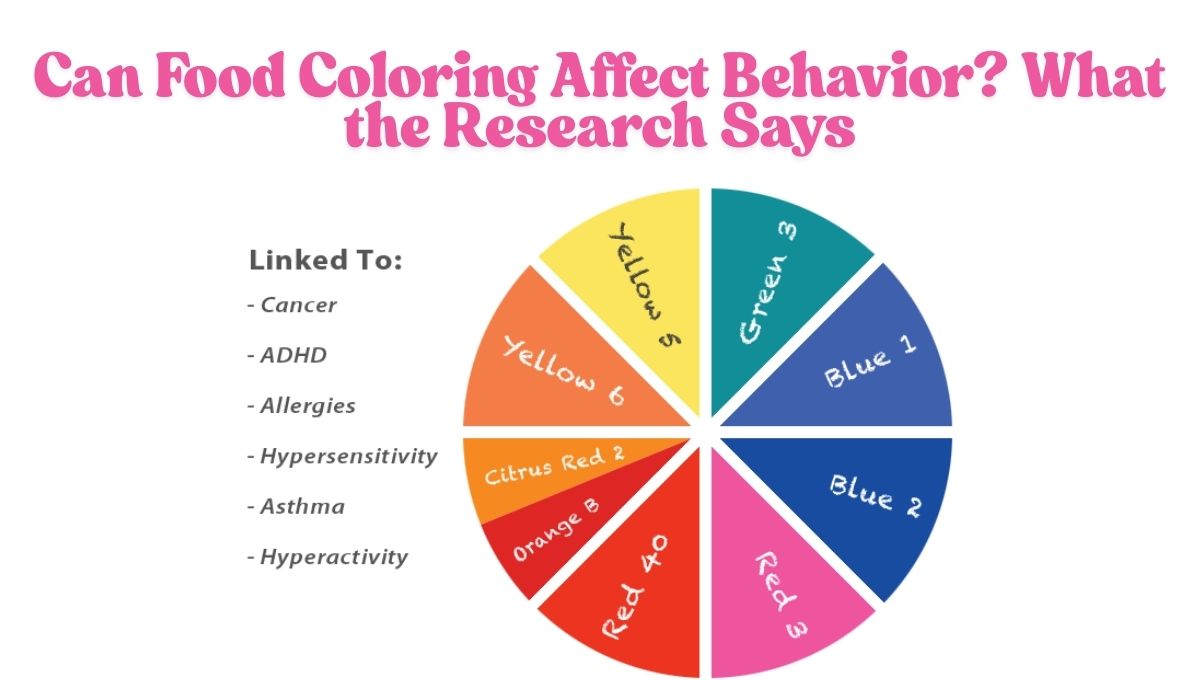Can Food Coloring Affect Behavior? What the Research Says

Food coloring shows up in everything from cereal boxes to birthday cakes. But beyond adding color, there's a growing debate: can food coloring affect behavior, especially in children? Concerns have sparked parental caution, school policy changes, and even regulatory reviews across different countries. In this article, we dive into the science, myths, and ongoing discussion to uncover what the research really says about food coloring and its possible behavioral effects.
What is Food Coloring?
Food coloring refers to dyes, pigments, or substances added to food or drinks to enhance appearance. They come in synthetic forms (like Red 40, Yellow 5, and Blue 1) and natural alternatives (such as beet juice or turmeric extract). Synthetic colorants are widely used in processed foods due to their stability and low cost. While approved by the FDA and similar agencies worldwide, concerns have been raised about their impact on sensitive populations.
Historical Concern: Where It All Began
The question of whether food coloring affects behavior dates back to the 1970s. Pediatrician Dr. Benjamin Feingold proposed that artificial colors and flavors could trigger hyperactivity in some children. His Feingold Diet, which eliminated these substances, gained traction among parents desperate for answers. Though widely criticized for lacking solid data, Feingold's work sparked a series of studies into the behavioral impacts of food additives.
The Research Landscape: What Studies Reveal
Mixed Findings Across Studies
Several double-blind placebo-controlled studies have investigated the effects of synthetic food dyes on children’s behavior. A 2007 study by the University of Southampton found a small but measurable increase in hyperactivity among children consuming certain food dyes and preservatives. This led the European Union to require warning labels on foods containing those additives.
However, follow-up studies—especially in the U.S.—have yielded inconsistent results. The FDA reviewed the data and concluded that while some children may be sensitive to food coloring, the general population is not significantly affected.
ADHD and Food Coloring
A subset of children diagnosed with ADHD may show behavioral improvements when food dyes are eliminated. This doesn’t mean dyes cause ADHD, but they may act as aggravators in those already predisposed. A meta-analysis in "Pediatrics" reported that artificial colors may have a small but significant impact on children’s behavior, particularly in those with existing attention issues.
Natural vs. Artificial: Does It Matter?
There’s a general perception that natural food coloring is safer than artificial dyes. While natural colorants don’t contain synthetic chemicals, their safety isn't absolute. Some individuals may have allergies or sensitivities to natural substances too. However, when it comes to behavioral concerns, most of the research scrutiny has focused on synthetic dyes rather than natural alternatives.
Regulatory Stance: U.S. vs. Europe
The U.S. FDA allows the use of artificial colors but monitors them for safety. They require certification and proper labeling but stop short of requiring warning labels. In contrast, the European Union mandates warning statements on foods containing certain synthetic dyes, urging manufacturers to shift toward natural alternatives. This policy difference reflects varying interpretations of the same research data.
Parental Observations: Beyond the Science
Anecdotal evidence can be powerful. Many parents report seeing changes in mood, focus, or behavior after their children consume brightly colored foods. While not scientifically rigorous, these lived experiences often guide dietary choices more strongly than academic studies. In some cases, removing food dyes has made a noticeable difference in household dynamics.
Industry Response and Trends
With consumer demand shifting, many brands are reformulating products to include natural colorants or omit food coloring altogether. Major companies like Kraft and Nestlé have pledged to remove artificial dyes from children’s products. Organic brands rarely use synthetic dyes, aligning their products with growing health-conscious market trends.
FAQs
Is food coloring safe for everyone?
Food coloring is considered safe for the general population when used within regulatory limits. However, certain individuals—especially children with behavioral sensitivities—might react negatively.
Are natural food colorings better?
Natural food coloring avoids synthetic chemicals but may still cause reactions in sensitive individuals. They’re often preferred for their clean-label appeal.
Can food coloring cause hyperactivity?
Research shows that artificial food dyes may increase hyperactivity in a small subset of children, particularly those with ADHD or behavioral sensitivities.
Should parents eliminate food dyes from their children’s diet?
If you notice behavioral changes linked to specific foods, consider eliminating artificial dyes and monitor the effects. Consult a healthcare provider for personalized guidance.
Conclusion
So, can food coloring affect behavior? The answer isn’t black and white. For some children—especially those with behavioral sensitivities—synthetic food dyes may exacerbate symptoms like hyperactivity. While not harmful for the majority, growing evidence and changing public sentiment are encouraging a shift toward natural alternatives. If you're concerned, reviewing ingredient labels and opting for dye-free options can be a step toward peace of mind.
